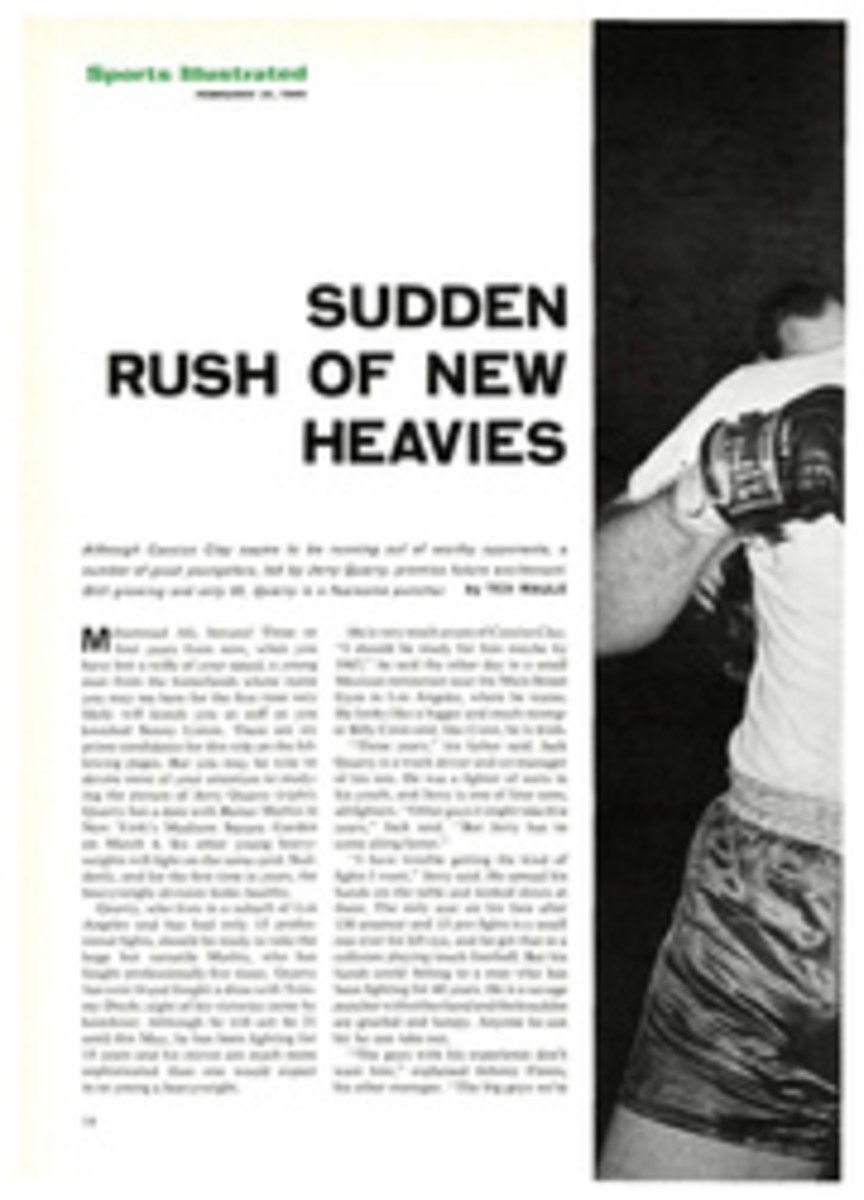
DAYS OUT OF THE ARABIAN NIGHTS
Looking like one of Scheherazade's heroines, Jennifer Anderson rides in the native costume class of the Scottsdale, Arizona All-Arabian Horse Show. Arabian owners from around the country will gather again next week to display their romantic steeds (following pages) and to tour the Arabian ranches in the Scottsdale area. At the Lasma ranch (above) mares and foals browse in the lush irrigated pasture against the jagged backdrop of the McDowell Mountains.
THE DESERT PRINCE
Very much at home in a desert almost half a world away from that of his ancestors, the Arabian horse, once an exotic rarity in the West, is now well established in Arizona. Although this transplant is relatively recent (it dates back roughly to World War II), there probably is a greater concentration of Arabian breeding ranches—16 now—in the Scottsdale vicinity than in any other part of the country. The breed is popular for many reasons. No other has such a romantic mélange of myth and truth in its history, with heroic tales of almost superhorse feats performed by individual Arabians in the past. Their deeds of today, such as winning California's 24-hour, 100-mile Tevis Cup and several cutting horse championships, testify to the Arabian's continued stamina and intelligence.
The breed has a distinctive beauty and disposition that attract both professional and neophyte horsemen; one finds offers to swap saddlebreds or Standardbreds for Arabians in the trade journals. A smallish horse, averaging between 14 and 15 hands, the Arabian has fewer vertebrae in his back than other breeds. This gives him a compact look and the ability to carry a fair amount of weight for his size. His head is usually slightly dished in the face, with big eyes and small, alert ears. The large nostrils, windpipe and lung capacity, probably acquired through eons of development in the desert, account for his remarkable potential for endurance. And this makes the Arabian an important strain in crossbreeding. The rangy Thoroughbred that steps onto the track at Churchill Downs traces his ancestry back to Arabians crossed with native English horses. Altogether, the pure physical look of Arabians so pleases some owners that they rarely break them to ride, but just put them in pasture to be looked at or shown in hand classes. At the same time the Arabian is so gentle that women, children and amateurs train and ride stallions with ease—which is not characteristic of the other light-horse breeds.
Arabian enthusiasts are a burgeoning group today. The Scottsdale show attracts horses from nearly 20 states and Canada, and is so successful that it keeps outgrowing its facilities. It is held in Paradise Park on land donated by Mrs. Fowler McCormick, and the ring, grandstands and stabling are used just once a year, for this show. Still, new barns have to be built almost annually, and the local exhibitors, including Mrs. McCormick, are obliged to van their horses back and forth to the grounds throughout the four days. One of the early Arizona breeders, Mrs. McCormick is the impetus behind much of the Arabian activity in the area. She was one of the first to import top Arabian bloodstock from England, and her son and daughter both own ranches and raise Arabians. Sharing the honors with the McCormick ranch is the Brusally, owned by Ruth and Ed Tweed, the oldest ranch in Arizona. Originally from Illinois, Tweed still raises Arabians there, in Lake Forest, but he keeps more than 100 head on his Arizona acres. He imported 14 mares and three stallions from Poland, where the Arabian strain has been kept particularly pure (SI, March 11, 1963), so that now purebred Polish Arabians can also be purchased in the United States. There are 72 Polish imports in the Scottsdale area—more than in all the rest of the country.
Although some Polish stock was imported in the '30s, the Scottsdale buying was started by Robert Aste, owner of the Desert Arabian Ranch. A New Yorker, Aste came to Arizona on a winter vacation in 1955 and has never left. He first saw Arabians at a horse show and instantly fell in love with the breed. He designed a luxury stable, with Queen Mary-type accommodations for the Arabians and four complete apartments for staff and visitors. Visiting buyers, Aste feels, can study the stock at leisure, but horse people are great dropper-inners, talkers and stayers, so he built the stable six miles from his house to assure himself some non-horsy privacy. This is particularly convenient during the show, as visitors from out of town crowd the surrounding ranches like tourists in the Bluegrass, admiring not only the horses but the spectacular garments and tack displayed in that most typical Arabian event, the native costume class. Velvets, brocades and tassels are combined in rich panoply, and most of the outfits are handmade by proud owners. One lady spent an entire summer sewing several hundred sequins onto her resplendent robe.
TWO PHOTOS
RICHARD MEEK
Costumes and trappings gleaming in red, purple and silver, Harold Daugherty and Arlyne Clay gallop toward the Paradise Park show ring. Marmion, ridden by Daugherty and owned by Carol and Guy Stillman, was champion in the native costume division. Equally colorful but more familiarly garbed, 17-year-old Kathy LaCroix (above) awaits western pleasure horse event.
TWO PHOTOS
RICHARD MEEK
Two gray stallions demonstrate the breed's versatility at Scottsdale. With saddle in back of buggy, Judy Swan guides Raf-Farana in a two-part event of driving and riding. Still another talent is shown by Dianne Davenport as she displays the reining abilities of Beau Baarouf in a stock horse event.
TWO PHOTOS
RICHARD MEEK

